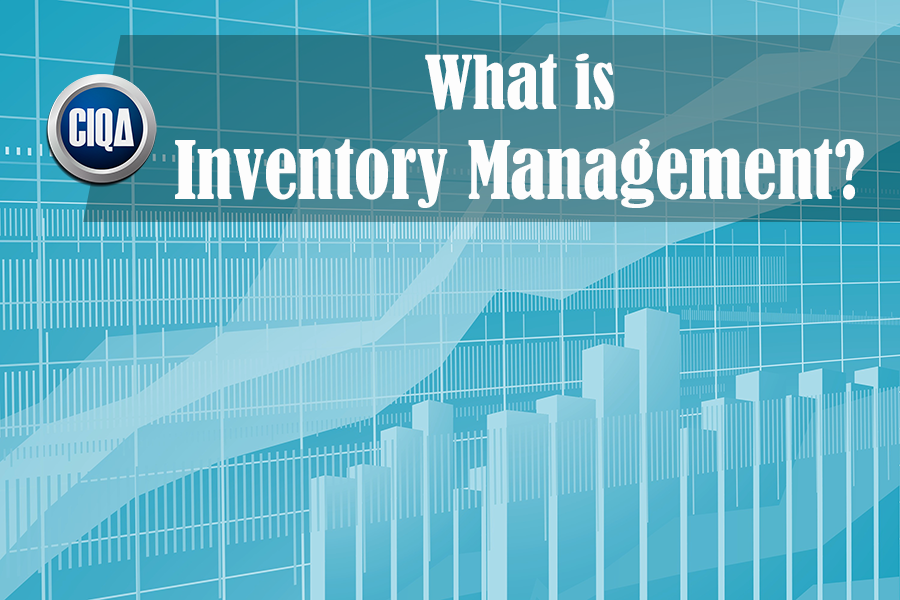
Top 3 Attributes of What is Inventory Management in Process Excellence.

|
In this article, you will learn the main characteristics of what is inventory management and how it can be good or bad. If used incorrectly, excessive inventory can be a significant waste of warehouse space, resources, and budget. But a great advantage, if it is used correctly according to Lean Six Sigma, Process Excellence, and Lean Manufacturing. Inventory MeaningInventory is a company resource, possession, property, or asset that have the following three (3) attributes: i) that is tangible or intangible, ii) that can be realized for revenue generation or has a value for exchange, or iii) which is in the process but is meant for sale in the market. Over and under Inventory is a waste in lean manufacturing. Inventory is the raw materials, work in progress (WIP), and finished goods stock that is held. The main causes are the over inventory is associated with overproduction, making more than the customer wants or in advance of customer demand, these two wastes are heavily interlinked. It is associated or caused by poor layout and lack of balance in the workflow causing inventory to build up before or after different processes. This is a good indication of poor flow within the processes. Under inventory is a waste too, since promotes backorders, short orders, high waiting times, high lead times, etc. Understanding How to Handle an Inventory?Inventory means the number of products that a company has available for sale. Also, this definition includes the number of raw materials that a company has available to make their products. Therefore, Inventory includes all available items, goods, merchandise, and materials held by a business on-hand for selling in the market to earn a profit. Sometimes it is represented in terms of money since involves a huge amount of business assets on-hands in a warehouse or storage. Some people see their warehouse as their “bank” in which they have their money locked until the products are sold. Inventory levels impact the business economy because the turnover of the products represents one of the primary sources of revenue generation and subsequent earnings for the company’s shareholders. Discover What is Inventory ManagementInventory is the array of finished goods or goods used in the production held by a company. Inventory management classifies the current asset on a company’s balance sheet, and control it as a buffer between manufacturing and order fulfillment. When an inventory item is sold, its carrying cost transfers to the cost of goods sold (COGS) category on the income statement. Manufacturing Industry ExamplesInventory is the final product manufactured and ready to sell, but also the raw materials necessary in production and the Work-In-Process (WIP) products in the warehouse or on the manufacturing floor. Example: For a medical devices manufacturer, inventory will include the packets of catheters that are ready to sell, the semi-finished stock of catheters that haven’t been assembled or packed yet, the components set aside for quality checking, and raw materials like wiring, batteries, and tubing. What are the 8 Types of Inventory?1. Raw Materials InventoryRaw materials consist of all components and items that are required to make the final product. In a pharmaceutical manufacturing company, the raw materials are items like active ingredients, vials, and labels that are used in the different stages of production. Related to raw materials, it is important to realize that raw materials used by a manufacturing company can either be sourced from a supplier or be a by-product of a process. This type of raw material inventory exists only in the manufacturing industry. In a service or trading industry in which there is no processing or manufacturing involved, raw material inventory does not exist. 2. WIP Work in Progress InventoryWork in Process Inventory is called when raw materials are on the manufacturing floor been processed but have not yet been completed, and approved as finished goods. In fact, the work in progress inventory is a category that contains all the items that have been processed but not ready for sale. 3. Finished Goods InventoryFinished goods inventory considers the final products that are ready for sale in the market. These items have passed through all stages of production and quality checking. 4. MRO Maintenance Repairing and Operating InventoryMRO Inventory means the stock of items and supplies not related to the bill of materials (BOM) of finished products. Since this type of inventory is typical in manufacturing industries, can be found in some service industries. Since the MRO items are not used directly in the finished product manufacturing, it is not accounted as inventory items in books of accounts. But it plays a critical role in the day-to-day working of an organization. MRO supplies are used for maintenance, repair, and upkeep of the machines, tools, and other equipment used in the production process. Some examples of MRO items are gowning, grease, lubricating oil, gaskets, screws, bolts, etc. 5. Buffer InventoryBuffer inventory (also known as safety stock), consists of the items stored in the warehouse to cushion the impact of unexpected shocks. Buffer inventory aims to compensate for fluctuations and market movements that cannot be predicted and can lead to out-of-stock situations. In this manner, a sudden spike in demand, delay in transport, or labor strike can be managed if sufficient buffer inventory is maintained. 6. Cycle InventoryCycle inventory (also known as Recurrent Inventory) consists of the products that are ordered in big lot sizes and on a regular basis. It is particularly useful when a client places an order for a big amount of your products for the whole year but wants to receive it then distributed on a monthly basis. Cycle inventories are usually materials that are directly used in the production or they are part of some regular process. 7. Decoupling InventoryThis type of inventory applies when manufacturing is carried on by multiple machines. The output of one machine is fed into the next machine for further processing. However, the process only works smoothly if all the machines work in tandem. A breakdown in any of the machines can derail the entire process, which is when decoupling inventory comes into the picture. Decoupling inventory consists of items that are kept in reserve to be processed by another machine if the previous machine fails to produce its usual output. 8. Transit InventoryTransit inventory refers to items that are being moved from one location to another, such as raw materials being transported to the factory by railway or finished goods being transported to the store by truck. CIQA is a quality and regulatory consultant with 25 years of experience developing products and managing projects in the medical device supply chain, and pharmaceutical industries. Rest assured of the safety or being in the right hands. Our Lean Manufacturing team could provide you a broad range of professional expertise implementing these techniques and tools. SUBSCRIBE AND FOLLOW US TO LEARN MORE.For more details about what is Inventory Management, follow us.Three (3) Options to Create Document Control Management DCM Procedures:Bronze Option. You Can Create Your Own Quality Procedures, using a Template.You can download samples of the Document Control Management DCM procedure templates in .pdf format. To see the complete list of the most popular quality procedures templates, click here. In addition, you can request a quotation to buy online a full SOP template document in MS Word format that is completely editable, ready to fill, and adapt to your specific needs. Silver Option. We Can Bring You Formal Training about what is Inventory Management.This option is recommended if you want to learn more about how to build robust quality system procedures. One of our expert(s) can provide online step-by-step training to your team (unlimited assistance) on how to build reliable SOPs using our template(s). Also, you can improve your corporate quality procedures and policies by incorporating our template(s) and tools. It includes a fully editable template from the Bronze option, plus training, exams, and a training certificate for each assistant. Request a quote now. Gold Option. We Can Create Customized Quality Procedures.One of our expert(s) will create and prepare your customized SOPs with the inputs and specific information of your company. It includes a fully editable template from the Bronze option, plus online support in document creation, implementation, and training. Request a quote online. Get in compliance today, CONTACT US (Hablamos Español)REFERENCES: What is Inventory Management.httpss://en.wikipedia.org/wiki/Lean_Six_Sigma httpss://www.greycampus.com/blog/quality-management/a-brief-introduction-to-lean-and-six-sigma-and-lean-six-sigma httpss://www.investopedia.com/terms/i/inventory.asp httpss://www.zoho.com/inventory/guides/inventory-definition-meaning-types.html |

Ramon Cayuela, MS, BS, Chemical Engineering
CIQA President and CEO.
I've been working in validation engineering since 1992 with many multinational pharmaceutical companies. I love sharing my passion and knowledge with others. If you have any questions about anything (or just have general questions). I will be more than happy to assist you. You can count on the BEST customer service on CIQA. I go to great lengths to make sure my clients are 100% satisfied with their purchases and check emails/messages consistently throughout the day. You can rest assured that everything being sold here is as-described or your money back. I look forward to working with you!
Related Articles
Subscribe to get validation
news and free tips by email.
Need Additional Help?















